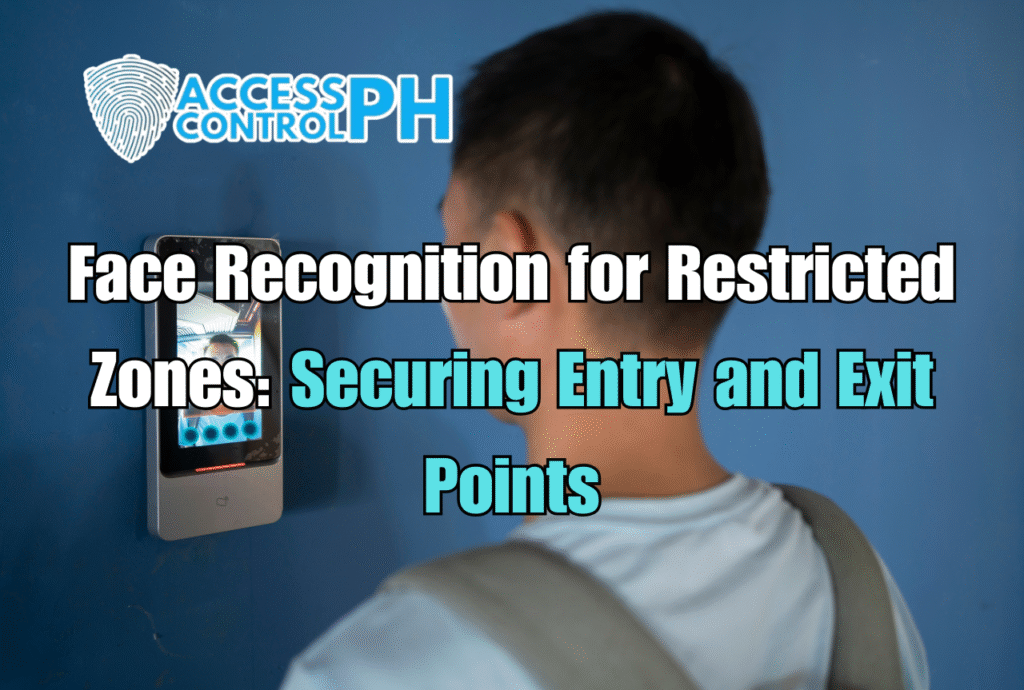
In today’s world, ensuring the safety of restricted zones—whether in corporate offices, government facilities, warehouses, or research labs—requires more than just keycards and PIN codes. As security threats become more sophisticated, organizations in the Philippines are increasingly turning to face recognition technology to secure critical areas.
Face recognition access control offers a touchless, secure, and efficient method for managing entry and exit in high-security environments. With real-time identity verification and integration with modern access systems, it is becoming a go-to solution for securing sensitive zones.
What Is Face Recognition Access Control?
Face recognition access control uses AI-powered facial scanning to authenticate individuals in real-time. The system captures a person’s facial features using a high-resolution camera, compares it to a database of authorized personnel, and grants or denies access accordingly.
Unlike traditional methods such as ID cards or passwords, facial recognition is biometric, non-transferable, and difficult to spoof, making it ideal for areas where security must be airtight.
Why Use Face Recognition in Restricted Zones?
Restricted zones require tight control over who enters and exits. Whether it’s a server room, R&D lab, executive suite, or vault, these areas are often prime targets for unauthorized access or internal breaches.
Here’s how facial recognition enhances security and operational efficiency in such environments:
1. Eliminates Credential Sharing
Unlike RFID cards or PIN codes, which can be lost, stolen, or shared, a person’s face is unique and cannot be transferred. This eliminates one of the most common vulnerabilities in traditional access systems—credential misuse.
2. Enables Touchless Access
Especially in post-pandemic settings, touchless entry has become a key feature in both security and health protocols. Facial recognition systems offer a hygienic alternative to fingerprint scanners and card swipes.
3. Provides Real-Time Monitoring and Audit Trails
Facial recognition systems log every entry and exit with timestamped photos, creating a reliable audit trail. Security teams can track movements, detect anomalies, and investigate incidents more effectively.
4. Speeds Up Entry Without Compromising Security
In high-traffic areas like staff-only entrances or loading docks, face recognition enables fast and seamless authentication without delays or queues. It verifies identity in seconds—no need to dig for cards or remember passwords.
5. Integrates With Other Security Systems
Face recognition technology can be fully integrated into CCTV systems, alarm panels, and building management systems, allowing centralized control and real-time response to unauthorized attempts.
Where Face Recognition Is Most Effective
While it can be applied almost anywhere, face recognition access control is particularly beneficial in:
- Data centers and server rooms
- Pharmaceutical or research laboratories
- Bank vaults or secure storage rooms
- Executive offices and boardrooms
- Manufacturing zones with safety restrictions
- Hospital areas with limited personnel access
- Airport staff areas or government facilities
In each of these areas, the need for high-trust, low-friction access is critical—and facial recognition delivers exactly that.
Addressing Concerns Around Privacy and Security
Facial recognition, while highly secure, raises concerns around data privacy. In the Philippines, this technology must be implemented in accordance with the Data Privacy Act of 2012 (RA 10173).
Organizations must ensure:
- Proper data encryption and storage protocols
- Transparent data usage policies
- User consent and clear signage in areas with facial scanning
- Regular audits and system maintenance to prevent misuse
When used responsibly, facial recognition not only improves security but also builds employee trust and safety within the workplace.
Conclusion
Face recognition access control is transforming how restricted zones are secured in the Philippines. By offering unmatched accuracy, speed, and non-contact operation, it provides a future-ready solution for high-security environments.
As the demand for smart, scalable, and efficient access systems grows, integrating facial recognition into your restricted zones isn’t just an upgrade—it’s a strategic investment in safety and control.
For expert advice on implementing facial recognition systems in your facility, contact Access Control PH at (02) 8404 0740 or email us at sales@vastresult.com. Our team is ready to design a tailored access control solution that fits your operational needs and compliance requirements.

